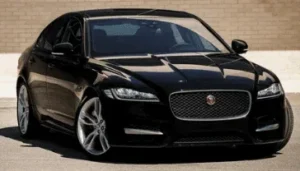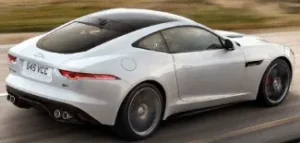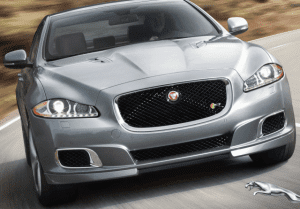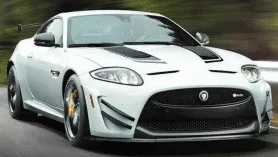JAGUAR OWNERS MANUAL

JAGUAR XF

VEHICLE ACCESS/ENGINE STARTING COMFORT ADJUSTMENTS FACIA DRIVING TOUCH SCREEN AND AUDIO AUDIO AND PORTABLE AUDIO INTERFACE TELEPHONE NAVIGATION VEHICLE SETTINGS GAS STATION INFORMATION
Jaguar F TYPE Owners Manual

Jaguar XF Owners Manual

Jaguar XJ Owners Manual

Jaguar XK Owners Manual

Jaguar is a British luxury car manufacturer renowned for producing performance-oriented vehicles with a combination of style, luxury, and cutting-edge technology. Here’s a detailed look at Jaguar’s history, reputation, and specifications of some key models.
History of Jaguar
- Early Beginnings (1922-1945):
- Founded as the Swallow Sidecar Company by Sir William Lyons and William Walmsley in 1922, the company originally manufactured motorcycle sidecars.
- In 1935, the company produced its first automobile, the SS Jaguar 100, a sports car that established the brand’s image for performance and elegance.
- During WWII, production shifted to military vehicles, and the company dropped the “SS” name due to its negative connotations after the war, officially adopting “Jaguar Cars” in 1945.
- Post-War Era and Growth (1945-1980s):
- In the 1950s, Jaguar became famous for its sports cars like the Jaguar XK120 and XK140, which helped solidify its status as a luxury sports brand.
- Jaguar’s C-Type and D-Type cars achieved significant racing success at Le Mans, winning the 24-hour race five times between 1951 and 1957.
- The Jaguar E-Type (1961-1975) is often regarded as one of the most beautiful cars ever made, combining elegance and high performance. It became an icon of the 1960s.
- In the 1970s and 1980s, Jaguar became known for luxury sedans like the XJ6 but faced financial difficulties due to quality issues and economic instability.
- Ford Ownership and Modernization (1990-2007):
- In 1989, Jaguar was acquired by Ford Motor Company, leading to improvements in build quality and the introduction of new models.
- Notable releases during this period include the XK8 (1996), a luxury grand tourer, and the revised XJ sedans.
- Tata Motors Ownership (2008-Present):
- In 2008, India’s Tata Motors purchased Jaguar along with Land Rover, combining them into Jaguar Land Rover (JLR).
- This era saw the introduction of modern designs and the inclusion of cutting-edge technologies. The brand launched new luxury sedans, SUVs, and electric models, including the XE, XF, F-Type, F-Pace, and the Jaguar I-Pace, its first all-electric SUV.
Reputation
Jaguar’s reputation has evolved over time:
- Performance and Design: Jaguar has always been recognized for its striking design and strong performance heritage. Models like the E-Type and XJ220 supercar helped solidify the brand’s image for luxury and speed.
- Luxury and Craftsmanship: Jaguar’s interiors are known for high-quality materials, with a focus on luxury, refinement, and comfort. The brand maintains a reputation for offering luxury at a price point lower than some of its German rivals.
- Reliability Issues: Historically, Jaguar has struggled with reliability issues, particularly during the 1970s and 1980s, which tarnished its reputation. However, under Tata Motors, quality control and dependability have seen notable improvements.
- Racing Pedigree: Jaguar has a deep-rooted history in motorsports, including its success in endurance racing at Le Mans, which enhanced its reputation for performance.
Key Specifications of Popular Jaguar Models
1. Jaguar F-Type (Sports Car)
- Engine Options:
- 2.0-liter turbocharged inline-4 (296 hp)
- 5.0-liter supercharged V8 (450 hp or 575 hp in the F-Type R)
- 0-60 mph: As low as 3.5 seconds (F-Type R)
- Top Speed: 186 mph (F-Type R)
- Transmission: 8-speed automatic
- Drive: Rear-wheel drive or all-wheel drive (depending on model)
- Reputation: A true sports car with exhilarating performance and bold design. It’s often compared to the Porsche 911.
2. Jaguar XE (Compact Executive Sedan)
- Engine Options:
- 2.0-liter turbocharged inline-4 (247 hp or 296 hp)
- 0-60 mph: 5.4 seconds (P300 AWD version)
- Top Speed: 120-155 mph (limited)
- Transmission: 8-speed automatic
- Drive: Rear-wheel drive or all-wheel drive
- Reputation: Competes with BMW 3 Series and Mercedes C-Class. Known for sporty handling and luxury, though criticized for slightly dated tech in older models.
3. Jaguar XJ (Luxury Sedan)
- Engine Options:
- 3.0-liter supercharged V6 (340 hp)
- 5.0-liter supercharged V8 (575 hp in XJR575)
- 0-60 mph: 4.2 seconds (XJR575)
- Top Speed: 174 mph (XJR575)
- Transmission: 8-speed automatic
- Drive: Rear-wheel drive or all-wheel drive
- Reputation: Flagship sedan offering premium luxury and powerful performance. Competes with the Mercedes S-Class and BMW 7 Series.
4. Jaguar F-Pace (Luxury SUV)
- Engine Options:
- 2.0-liter turbocharged inline-4 (246 hp)
- 3.0-liter supercharged V6 (335 hp or 395 hp in the P400)
- 5.0-liter supercharged V8 (550 hp in SVR)
- 0-60 mph: 3.8 seconds (SVR)
- Top Speed: 178 mph (SVR)
- Transmission: 8-speed automatic
- Drive: All-wheel drive
- Reputation: Combines the luxury of a sedan with the practicality of an SUV. Praised for driving dynamics and interior quality.
5. Jaguar I-Pace (Electric SUV)
- Motor: Dual electric motors producing 394 hp and 512 lb-ft of torque.
- Battery: 90 kWh lithium-ion
- 0-60 mph: 4.5 seconds
- Range: ~234 miles per charge (EPA estimated)
- Top Speed: 124 mph
- Charging: 0-80% in about 40 minutes with a 100 kW DC fast charger.
- Reputation: Jaguar’s first all-electric vehicle, praised for its bold design and being a serious competitor to Tesla’s electric vehicles.
Current Innovations and Future Plans
Jaguar is embracing electrification with plans to go all-electric by 2025, focusing on sustainable luxury. The brand is working to compete with new electric rivals like Tesla, while still maintaining its core identity of elegance and performance.
Would you like more details on specific models, or further information about Jaguar’s electrification plans?
Hybrid cars, electric vehicles, EV and HV.
Car manuals free download, technical information.
Free factory auto repair manuals PDF

